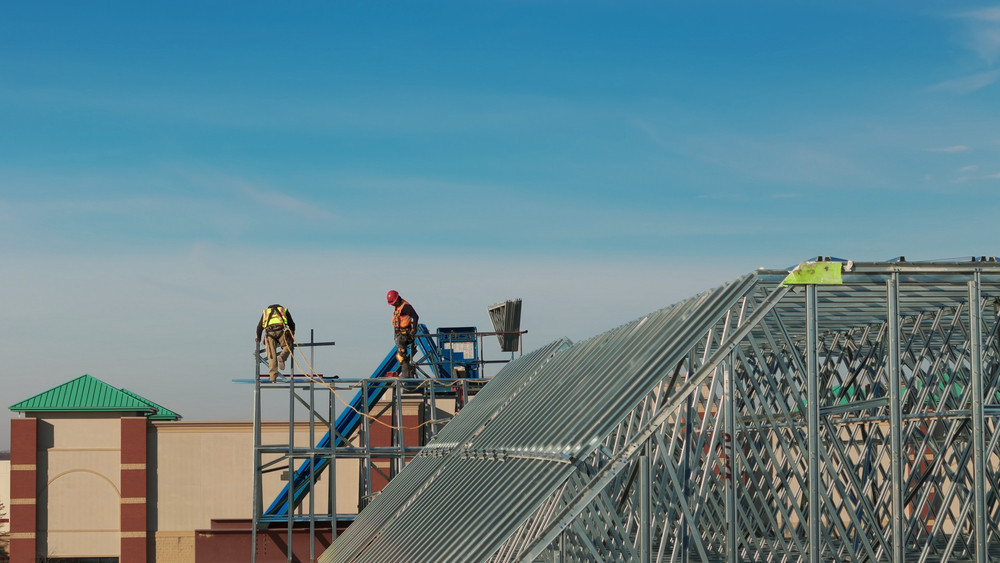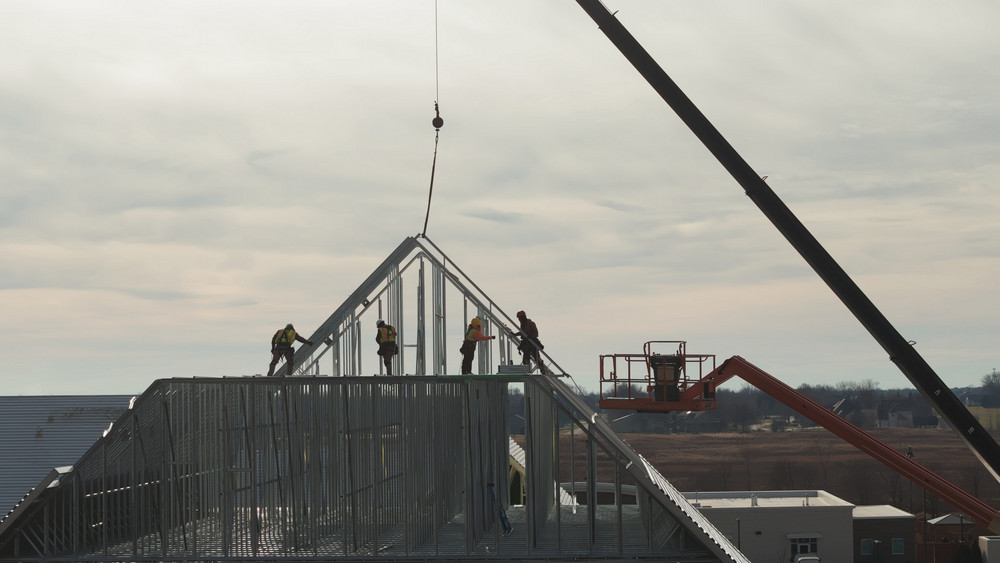Highlights
- Routine inspections and early repairs prevent minor roof issues from becoming costly damage.
- Cleaning debris, moss, and algae helps preserve roofing materials and prevent water pooling.
- Proper attic ventilation and insulation reduce heat buildup that shortens roof life.
- Gutter maintenance prevents water overflow and damage to shingles and flashing.
- According to the National Roofing Contractors Association (NRCA), homeowners should schedule two professional roof inspections per year for optimal longevity.
- According to Owens Corning, neglecting roof maintenance can reduce a roof’s expected lifespan by up to 30%.
Understanding the Importance of Roof Maintenance
Your roof is one of the most important systems protecting your home, yet it often goes unnoticed until problems arise. Roofs face constant exposure to sunlight, rain, wind, and debris, which gradually wear down materials. Over time, small cracks, loose shingles, or clogged gutters can lead to leaks and structural damage if left unaddressed. Regular roof maintenance extends the life of your roofing materials and saves you money on premature replacements. It’s not just about keeping the roof looking good—it’s about ensuring it performs well under all weather conditions and maintains your home’s structural integrity year after year.
Scheduling Regular Roof Inspections
According to WIN Home Inspection, the most effective way to extend a roof’s lifespan is to schedule consistent inspections. A professional roofer can identify minor issues that are invisible from the ground, such as damaged flashing, nail pops, or weakened sealant around vents. The guide recommends having a roof inspection at least twice per year — once in the spring and again in the fall — to prepare for seasonal weather extremes. Inspections after major storms are equally critical since hail, wind, and heavy rain can cause hidden damage. Addressing these problems early can add years to your roof’s usable life and prevent emergency repairs.
Cleaning and Removing Debris
Fallen branches, leaves, and organic debris can trap moisture on the surface of your roof. When moisture lingers, it encourages the growth of moss and algae, both of which can deteriorate roofing materials. Keeping your roof clean is simple preventive care that pays off over time. Homeowners should safely clear debris using a soft broom or blower instead of harsh pressure washing, which can strip protective granules from shingles. Trimming overhanging branches also helps limit debris accumulation and minimizes shade that promotes algae growth. For homes in damp or wooded areas, cleaning treatments every six to twelve months can make a significant difference.
Controlling Moss and Algae Growth
Moss and algae may seem harmless at first, but they pose long-term threats to roof durability. Moss retains moisture against the shingles, causing them to lift and crack, while algae stains can accelerate surface degradation. Preventive cleaning with gentle biocides or specialized roof washes removes growth without damaging materials. Some homeowners also install zinc or copper strips along roof ridges; rainwater carries trace metal ions down the surface, naturally inhibiting regrowth. This small addition can help preserve your roof’s appearance and structural health. In regions with humid climates, scheduling professional cleaning annually helps keep biological growth under control.
Maintaining Gutters and Drainage Systems
Your gutter system is essential to roof maintenance. Clogged or damaged gutters cause water to back up under shingles, rot fascia boards, and stain siding. Cleaning gutters twice a year—especially after heavy leaf fall—ensures proper drainage and prevents ice dams in colder months. Downspouts should direct water at least three feet away from the foundation to prevent erosion or basement leaks. Installing gutter guards can also reduce debris buildup. When gutters function correctly, they protect not only the roof but also the home’s overall structure. Neglecting them can shorten your roof’s lifespan by creating chronic moisture problems.
Checking Flashing and Sealants
Roof flashing—thin metal strips installed around chimneys, vents, and valleys—serves as a waterproof barrier in high-risk areas. Over time, flashing can loosen, rust, or develop cracks in the sealant, leading to leaks. During regular maintenance, inspect flashing for gaps or corrosion. Replacing or resealing these areas early is much cheaper than repairing interior water damage. A small investment in resealing joints can prevent extensive structural issues later. For asphalt shingle roofs, a good rule of thumb is to inspect all flashing during every roof inspection and after any severe weather event that might dislodge metal sections.
Protecting Roof Ventilation and Insulation
Proper attic ventilation and insulation play a hidden yet crucial role in roof longevity. When warm, moist air becomes trapped in the attic, it can warp decking and accelerate shingle deterioration. Balanced ventilation—allowing cool air in at soffits and hot air out at the ridge—prevents heat buildup that ages roofing materials prematurely. Likewise, adequate insulation helps regulate temperature and minimize condensation. According to Owens Corning, poor ventilation can reduce a roof’s expected service life by up to 30%. Regularly checking attic airflow, vents, and insulation condition ensures the entire roofing system functions efficiently and lasts as long as possible.
Repairing Small Issues Promptly
Even minor roof issues can escalate quickly if ignored. A missing shingle might seem trivial, but it exposes the underlayment to moisture, leading to leaks and wood rot. Similarly, cracked caulking or minor punctures around roof accessories can compromise the entire system. Prompt repairs preserve structural integrity and prevent water infiltration that could spread through rafters and insulation. Homeowners should keep a record of maintenance and repairs, as documentation can be valuable for warranty claims or future resale. A proactive repair mindset always costs less in the long run than reactive emergency fixes.
Seasonal Maintenance Considerations
Seasonal changes affect roofing materials differently. In winter, ice dams and freeze-thaw cycles can stress shingles and flashing, while summer heat accelerates thermal expansion and contraction. Fall maintenance should focus on cleaning gutters and removing debris, while spring is the best time to check for storm damage. After severe weather, inspect for lifted shingles, dented flashing, or granule loss. In coastal or high-humidity regions, consider more frequent inspections since salt air and moisture can corrode metal components. Customizing your maintenance plan by season and location ensures the roof can withstand local environmental challenges year-round.
Benefits of Professional Roof Maintenance Plans
Many roofing companies offer annual maintenance plans that include inspections, cleaning, and minor repairs. These programs often extend warranties and provide peace of mind that professionals are monitoring your roof’s condition. They can also track changes over time and identify early warning signs that homeowners might overlook. For older roofs, professional maintenance can delay replacement for several years, improving return on investment. Moreover, maintenance plans help document upkeep for insurance purposes. Partnering with a reputable roofer ensures maintenance is done safely and according to manufacturer recommendations, which protects both performance and warranty coverage.
Long-Term Savings Through Preventive Care
The cost of regular roof maintenance is minimal compared to full replacement expenses. Preventive measures—like cleaning gutters, replacing damaged shingles, and maintaining ventilation—extend roof lifespan and reduce costly structural damage. Roofs that are well cared for can last five to ten years longer than those neglected. Beyond savings, maintenance preserves curb appeal and property value. For homeowners, investing a small amount of time and money each year translates to long-term protection and fewer unexpected repairs. A well-maintained roof not only lasts longer but also enhances comfort, safety, and energy efficiency for the entire household.
Preserving Your Roof for Decades
Extending your roof’s lifespan isn’t about luck—it’s about commitment to regular maintenance. Simple actions like keeping gutters clear, cleaning debris, and inspecting flashing twice a year can add years of service to your roof. Pairing professional inspections with mindful care creates a comprehensive protection plan that prevents small issues from escalating into major damage. By investing in routine upkeep, homeowners safeguard their property’s value, enhance energy efficiency, and enjoy peace of mind knowing their roof will perform reliably through every season.





